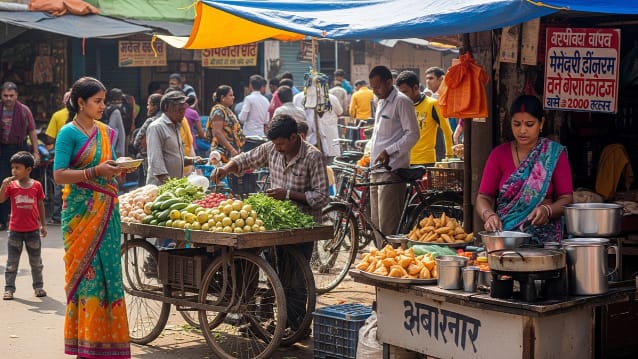Launched in 2008, PMEGP aims to promote self-employment by extending credit-linked subsidies to micro-entrepreneurs and artisans for setting up new ventures in manufacturing, services, and trade.

A key factor weighing on disbursals is the rising average project cost per unit. (Source: AI Image)
The government’s flagship credit-linked subsidy scheme, the Prime Minister Employment Generation Programme (PMEGP), has seen a notable decline in loan sanctions and beneficiary count in FY25 compared with the previous two years, data tabled in Parliament shows.
According to information shared by Minister of State for MSME Shobha Karandlaje in a written reply in the Lok Sabha, the number of loans sanctioned under PMEGP dropped by 34 per cent to 1.07 lakh in 2024-25 from 1.62 lakh in 2023-24 and 1.47 lakh in 2022-23. The number of beneficiaries followed a similar trend, declining by 33 per cent to 59,708 in FY25 from 89,118 in FY24 and 85,167 in FY23.
Explaining the fall, the minister said the appraisal and sanctioning of projects under the scheme rests with banks, which take credit decisions based on the viability of each project. “The final sanction and release of loans is done at the level of the concerned bank,” she noted.
Also read: US tariffs put India’s textile, diamond and chemical MSMEs at greatest risk
A key factor weighing on disbursals is the rising average project cost per unit, which has climbed from Rs 9.83 lakh in FY22 to Rs 12.36 lakh in FY25. The higher project size has, in turn, resulted in a larger outgo of margin money subsidy per unit, thereby reducing the number of projects and beneficiaries that can be supported within the allocated budget.
While larger project sizes may reflect stronger entrepreneurial appetite and a tilt toward higher-value ventures, the limited budgetary headroom is seemingly constraining the number of new entrepreneurs that can be brought under the scheme.
Also read: NPA Levels in CGTMSE-Backed MSME Loans Hit Multi-Year Low in FY25 Across States
Launched in 2008, PMEGP aims to promote self-employment by extending credit-linked subsidies to micro-entrepreneurs and artisans for setting up new ventures in manufacturing, services, and trade. The scheme is implemented by the Khadi and Village Industries Commission (KVIC) at the national level, with state KVIC directorates and district industries centres playing a facilitative role.
With MSMEs seen as crucial to India’s employment generation and economic growth, the slowdown in coverage under PMEGP may draw greater attention as the government looks to balance fiscal discipline with support for grassroots entrepreneurship.
Empower your business. Get practical tips, market insights, and growth strategies delivered to your inbox
By continuing you agree to our Privacy Policy & Terms & Conditions
